Recent Articles
Popular Makes
Body Types
2018 BMW X3 Road Test and Review

2018 BMW X3 hero ・ Photo by BMW
2018 marks the third generation of BMW’s popular X3 crossover, which paved the way for the luxury compact SUV class when it first appeared in the 2004 model year. While the X3 has surely grown softer over the years compared to the sharp-handling original, its appeal has widened in an ever-growing market.
The X3 is the middle child in BMW’s lineup, slotting above the subcompact X1 and under the coupe-like X4 in the squadron. The company calls its line of athletic crossovers “Sports Activity Vehicles” to differentiate them from the crowd of not-quite SUVs that have taken American roads by storm. The mid-size X5 is currently the largest of the pack, but a larger three-row X7 is due to arrive this year, along with a smaller X2. Two X3 models are offered for 2018: the 2.0-liter xDrive30i and the high-performance 3.0-liter M40i. We tested a well-equipped xDrive30i.
Exterior Design
There’s certainly no mistaking the X3’s BMW-ness, as it holds the usual visual clues, but the difference between the 2017 and 2018 are relatively subtle. Up front, the trademark twin-kidney front grilles have been enlarged (now including air shutters for improved fuel efficiency) and the wheel arches are more prominent, providing a taut, muscular look.
Three trim packages are offered with the xDrive30i: xLine (satin aluminum trim), Luxury (chrome trim) and M Sport (larger alloy wheels, aero bits and Shadowline trim).
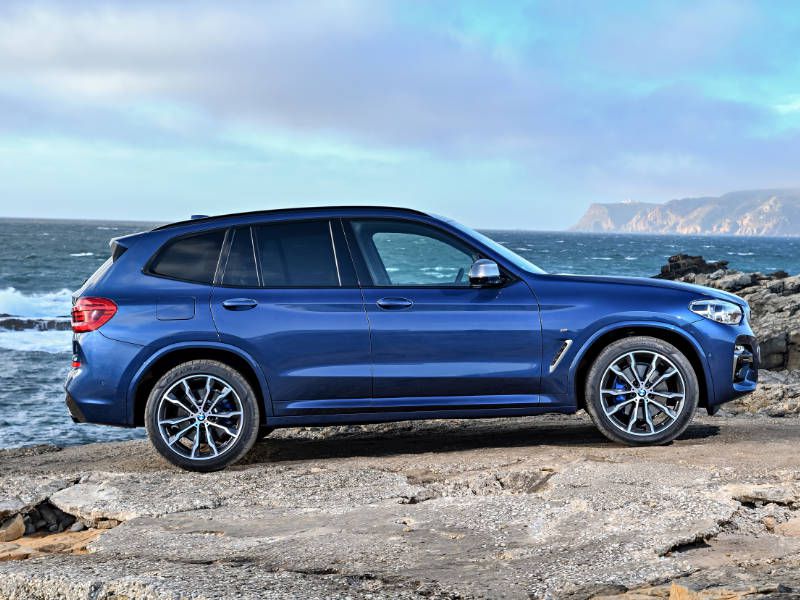
Photo by BMW
Interior Design
The X3’s cabin is blissfully quiet and beautifully appointed. Materials are top-notch, as is fit and finish. Side and rear visibility are quite good. A huge panoramic sunroof is included in the Convenience option package and does a marvelous job of opening up the cabin. The highly supportive front bucket seats feature 10-way adjustability, including thigh support. Lumbar support is included in the Convenience package as well.
SensaTec leatherette upholstery is standard. Our test car featured splendid Canberra Beige Vernasca leather upholstery ($1,700). The Premium option package includes navigation (with real-time traffic) and a marvelous heads-up display, along with a heated steering wheel, but front and rear seat heating is an additional $350. The back seat provides 39.1 inches of headroom, 36,4 inches of legroom, and 56 inches of shoulder room. There’s ample space to haul goodies and gear, with 28.7 cubic feet of cargo capacity behind the second row and a total of 62.7 cubic feet when the 40/20/40 rear seat is folded down.
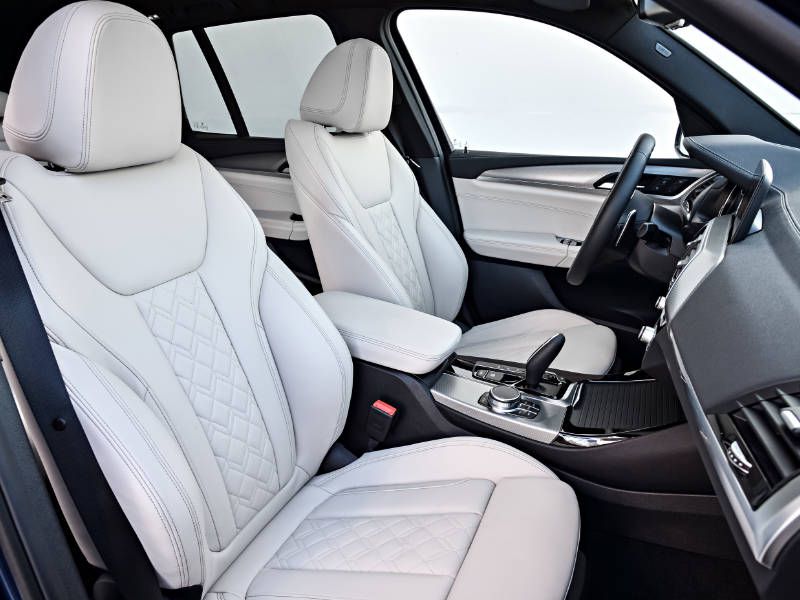
Photo by BMW
Safety Technology
While a host of modern safety technology is offered in the 2018 X3, most of it is optional and adds cost to the bottom line. With high-end safety tech offered in most vehicles these days — and in the case of Toyota products, throughout the lineup at no extra charge — it’s increasingly difficult for BMW to justify charging extra for what should be standard equipment. The Driving Assistance Plus option package ($900) includes blind spot mirrors, adaptive cruise control (with stop and go), active lane keep and frontal collision warning with city collision mitigation.
Particular attention is paid to speed limit awareness. This is a thoughtful measure, as the X3 is so smooth, it feels like it’s traveling 20 miles per hour slower than it actually is. The X3 doesn’t just read and display speed-limit sign information in the head-up display — it also provides a unique red trail on the speedometer for a quick visual readout when you’re traveling over the limit.
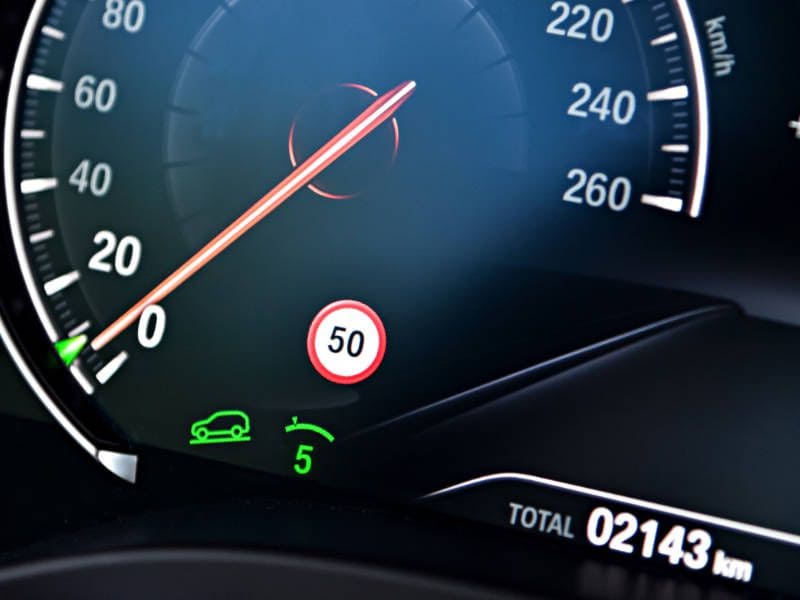
Photo by BMW
Infotainment and In-Cabin Technology
Our test vehicle was equipped with a massive and crisp 10.2-inch infotainment display, controlled via jog wheel or touch. Infotainment options included the 16-speaker Harman Kardon surround sound audio system ($875), Apple CarPlay ($300), which requires the BMW navigation system, and wireless charging ($500). Three-zone automatic HVAC is standard. The Executive option package (not tested) adds high-tech goodies including a 12.3-inch dynamic digital instrument cluster, gesture control and advanced parking technology.
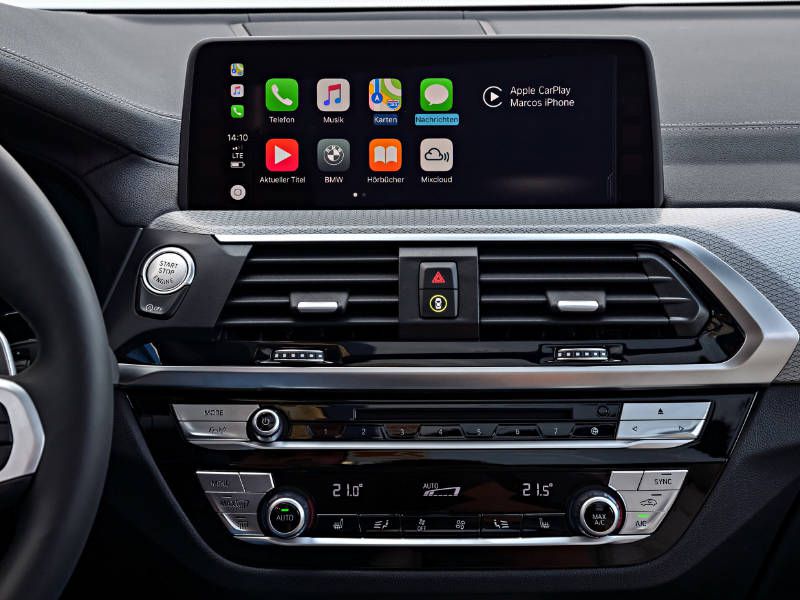
Photo by BMW
Powertrain
The X3 xDrive30i’s 2.0-liter TwinPower turbocharged inline four-cylinder engine produces 248 horsepower and 258 pound-feet of torque. It’s mated to a quick-shifting eight-speed automatic transmission. The all-wheel drive xDrive30i is responsive and quick off the line, with a BMW factory rating of six seconds flat in the 0-60 mph sprint. There's even a launch control function, just in case you need it.
Power delivery is excellent and nearly immediate — there’s ample oomph throughout the range. While there’s a wee bit of turbo lag, it's nothing to whine loudly about. The driving dynamics function allows drivers to choose among Eco Pro, Comfort and Sport modes. Those seeking more power will gravitate to the M40i’s TwinPower turbo inline six-cylinder engine, which produces 355 hp and 369 pound-feet of torque. It’s rated at a brisk 4.6 seconds from 0-60 mph.
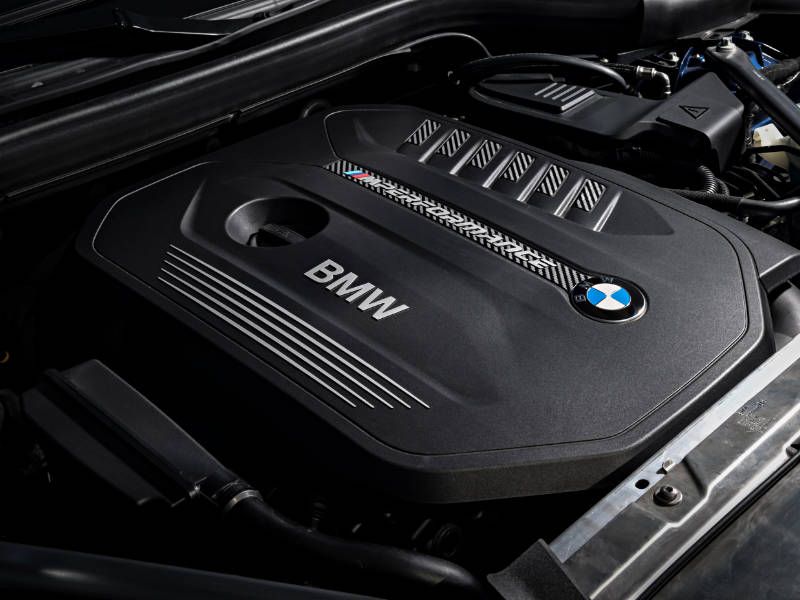
Photo by BMW
Ride and Handling
Our test vehicle was equipped with the Dynamic Handling Option Package, which includes dynamic dampers and variable sport steering, along with upgraded brakes. We found the handling to be sharp and the steering precise. The ride is still firm, but more compliant. Overall, it’s said to be significantly improved over the outgoing model, as it aims to deliver what you’d expect from a well-equipped BMW ute.
If you’re in the market for an X3, you’ll want to drive the 2018 back-to-back with a 2017, if possible, to appreciate the drivetrain’s added horsepower along with the suspension changes. Tire sidewall height can affect ride quality. You’ll want to consider the differences when making your purchase decision. The base X3 xDrive30i rides on 255/60-18 Michelin Primacy MXM4 ZP run-flat grand touring all-season tires, while the upgraded 19-inch alloy rims are wrapped with 245/50-19 Pirelli Cinturato P7 run-flat grand touring all-season tires.
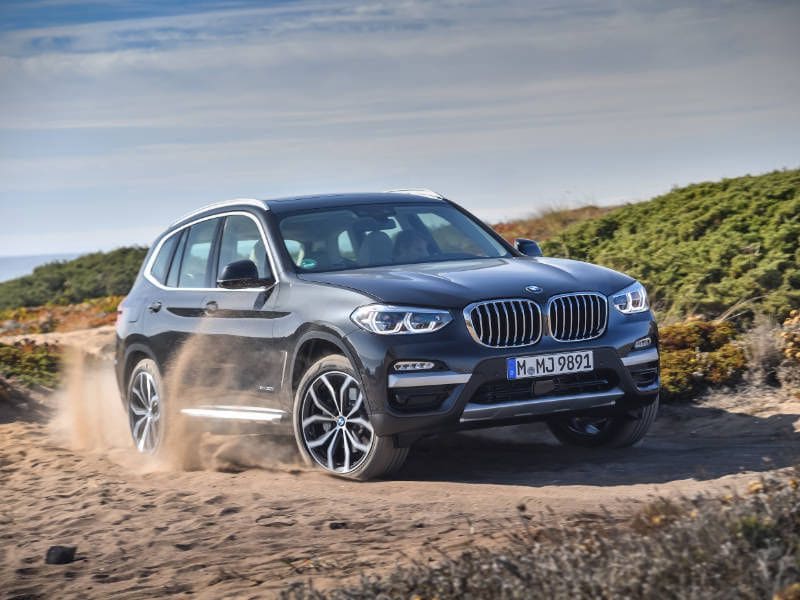
Photo by BMW
Efficiency
While far from the most efficient all-wheel drive vehicle in the BMW lineup, the X3 delivers admirable fuel economy. The highway coasting technology in Eco Pro mode boosts efficiency for conscientious drivers, and the 17.7-gallon fuel tank provides a respectable amount of driving range. EPA ratings of the xDrive30i are 22 mpg city, 29 mpg highway and 25 mpg combined on premium fuel. The more powerful M40i model is only slightly less fuel efficient than the xDrive30i, with EPA ratings of 20 / 27 / 23 mpg.
While those are good figures for conventional gas engines, the competing Lexus NX 300h hybrid and Jaguar F-PACE turbodiesel are more efficient at 33 city / 30 highway / 31 combined and 26 city / 33 highway / 29 combined, respectively. Meanwhile, BMW's diesel 328d station wagon hits 34 mpg combined, while a plug-in hybrid X5 xDrive40e has an EPA rating of 56 mpg-equivalent and 24 mpg combined.
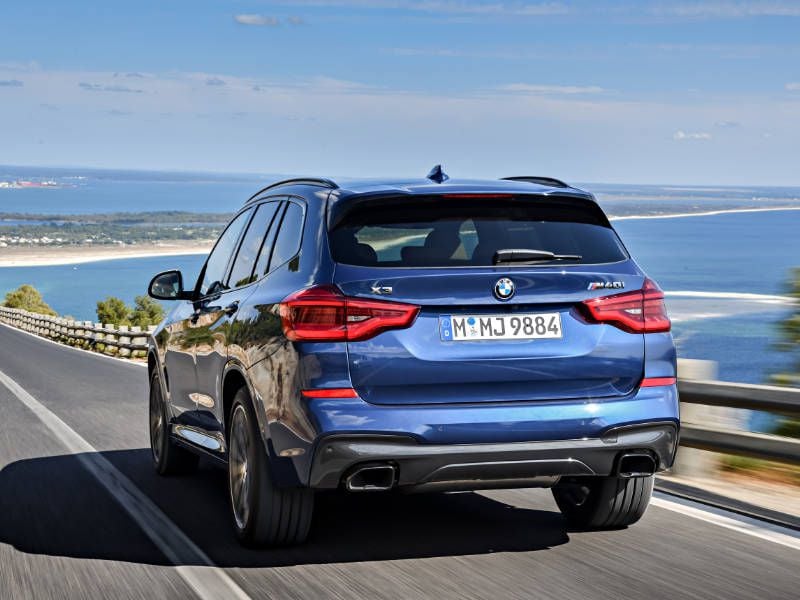
Photo by BMW
Competitive Field
The competition in the luxury compact SUV class is fierce. The BMW X3 was the fourth best-selling luxury compact SUV in America in 2017, trailing the Lexus NX, Acura RDX and Mercedes-Benz GLC. While X3 sales were down significantly from 2016, as customers awaited the revised 2018 model, the X3 slotted in comfortably ahead of the Lincoln MKC and Volvo XC60 (which has been redesigned for 2018). The Audi Q5 also received a 2018 redesign and is highly rated, as is the superb Porsche Macan.
Competition in the compact SUV field widened in 2017 with the Jaguar F-PACE selling well. The newly arrived 2018 Alfa Romeo Stelvio offers yet another sporty alternative. American manufacturers are largely (and oddly) absent from the class other than the less-sophisticated MKC.
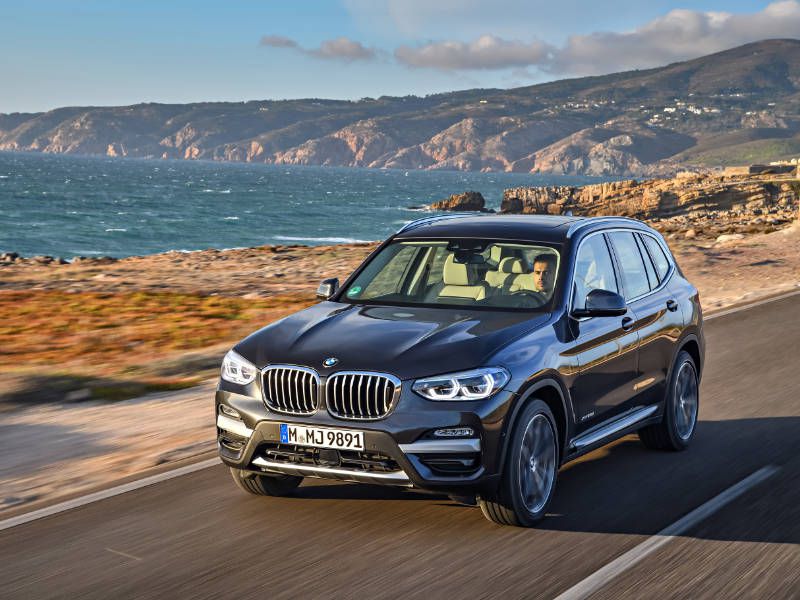
Photo by BMW
Pricing and Value
The key issue with the X3, as is the case with BMW vehicles in general, is that most of the great stuff is optional, and the cost of those options (whether individually or in a package) adds up quickly. If you’re familiar with the brand, this should come as no surprise.
The 2018 xDrive30i has a manufacturer’s suggested retail price of $42,450. Our test vehicle had individual options, packages and a $995 destination charge that ran the price up to $57,620. Option packages include: Convenience ($2,850), Driving Assistance ($900), Dynamic Handling ($1,400), Parking Assistance ($1,300) and Premium ($3,300). If you get pulled in by a low teaser monthly rate in an advertisement, you may be in for a shock once it’s all tallied up.
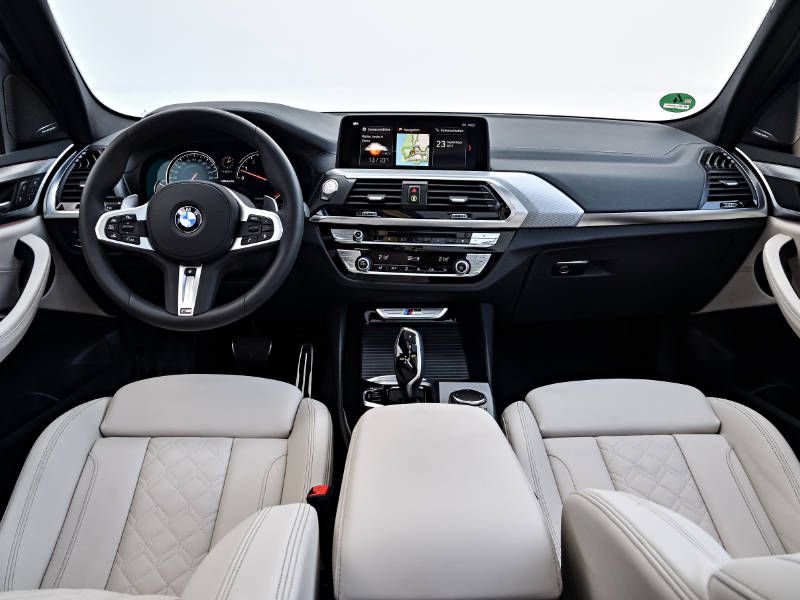
Photo by BMW
Verdict
Compact luxury crossover buyers have an abundance of competent and well-trimmed vehicles to choose from in 2018. The X3 will appeal to those most focused on all-around performance. It provides excellent road manners and a beautifully executed interior, along with the technology you’d expect in a modern luxury SUV, er, SAV… as long as you check all of the option boxes.
The Acura RDX, Audi Q5, Lexus NX, Jaguar F-PACE and Mercedes-Benz GLC all provide compelling alternatives to the third-gen X3, and not one is a bad choice. There is no overall best model in this class, only the one best suited for you. Take your time, drive one against the next, and run all the numbers. For many folks, luxury suvs are a relatively short-term lease, rather than a long-term commitment. Which pair of luxurious shoes fits best?
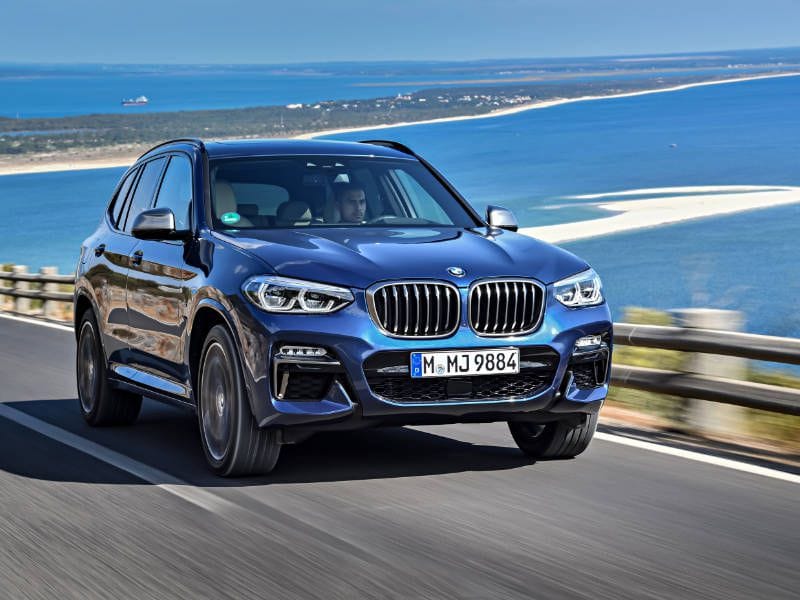
Photo by BMW